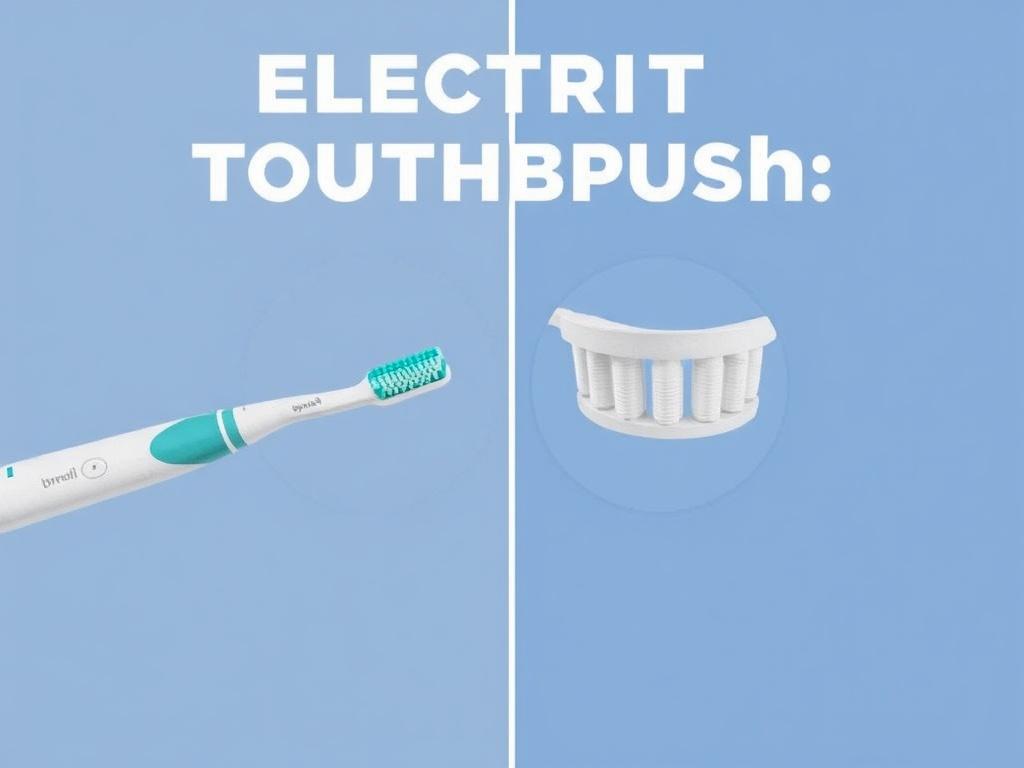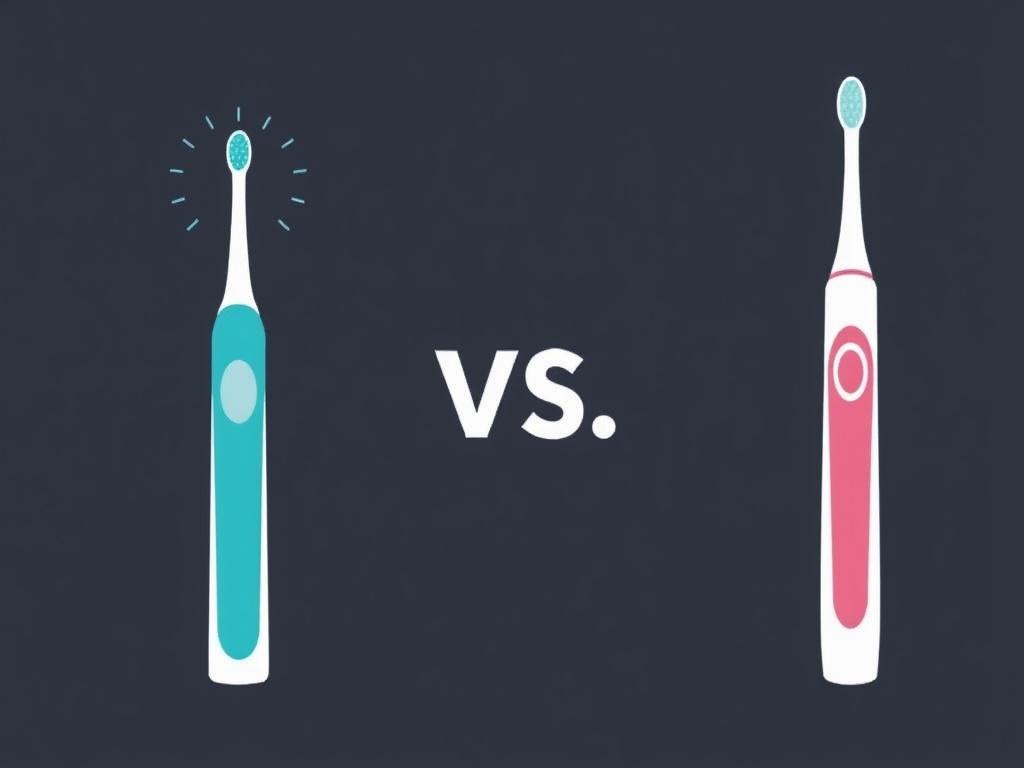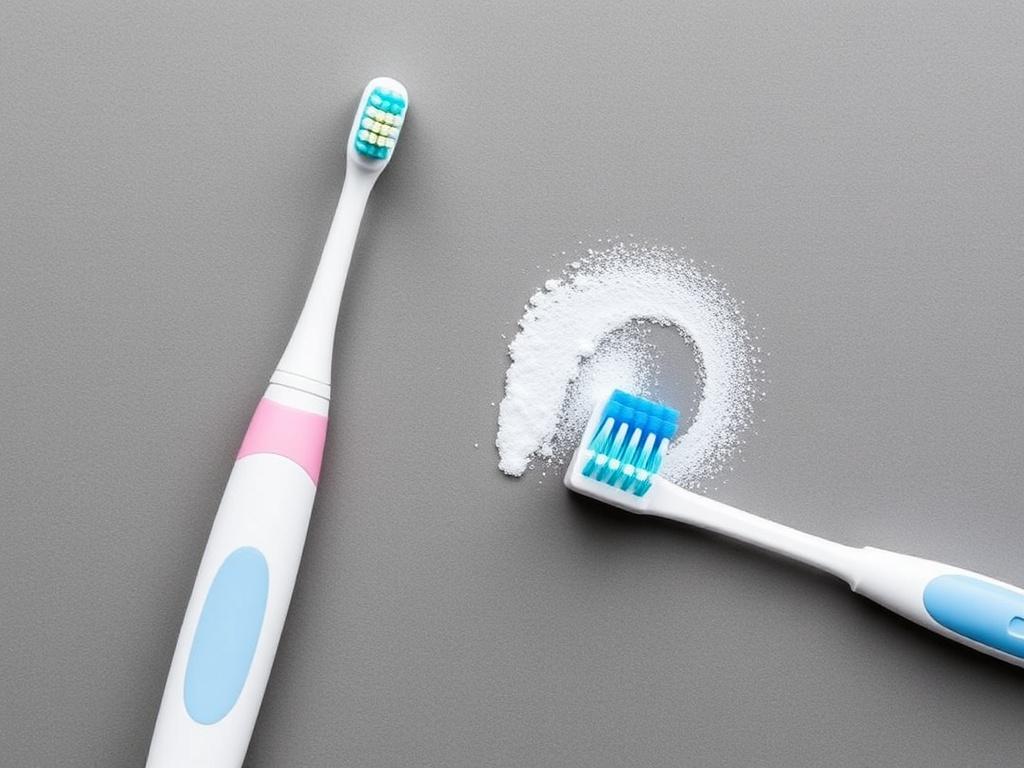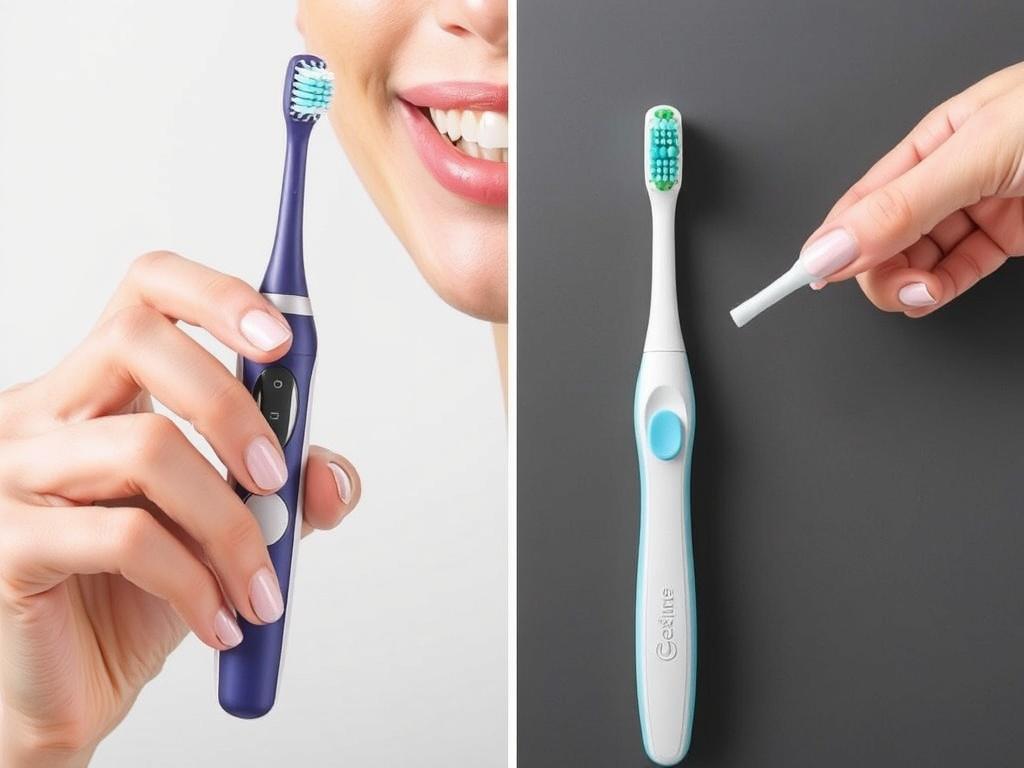When it comes to maintaining good oral hygiene, the toothbrush you choose plays a significant role. The debate between electric toothbrush vs. manual toothbrush has been ongoing for years, leaving many people wondering which is truly better. Both types of toothbrushes are designed to clean your teeth and gums, but they do so in quite different ways. In this article, we’ll dive deep into the differences, pros, and cons of electric and manual toothbrushes, helping you make an informed decision about which option is best for your dental health.
Содержание
- 1 The Basics: Manual Toothbrush Explained
- 2 What Makes Electric Toothbrushes Different?
- 3 Comparing Cleaning Effectiveness: Which Cleans Better?
- 4 Cost Considerations: Investing in Your Oral Health
- 5 Ease of Use and Convenience
- 6 Environmental Impact: Which One Is Greener?
- 7 Frequently Asked Questions About Electric Toothbrush vs. Manual
- 7.1 1. Does using an electric toothbrush reduce brushing time?
- 7.2 2. Can I damage my gums with an electric toothbrush?
- 7.3 3. Are electric toothbrushes better for people with braces?
- 7.4 4. How often should I replace my electric toothbrush head?
- 7.5 5. Can manual brushing be just as effective as electric brushing?
- 8 Tips for Choosing Your Toothbrush
- 9 Caring for Your Toothbrush: Maintenance Tips
The Basics: Manual Toothbrush Explained
A manual toothbrush is the traditional tool that almost everyone has used at some point in their lives. It’s simple, inexpensive, and doesn’t require batteries or charging. Manual toothbrushes typically have a plastic handle and nylon bristles arranged in a small head designed to reach all areas of your mouth. You control the brushing speed, pressure, and technique entirely with your hand movements.
Let’s consider some advantages of manual toothbrushes. First, they are very affordable and widely available in various styles. This makes them easily accessible for almost everyone. Also, because they’re simple, you don’t have to worry about replacing batteries or charging the toothbrush after every use. Additionally, manual toothbrushes offer you complete control over brushing pressure and pattern, which some users find comforting.
However, manual toothbrushes require proper brushing technique to be effective. Many people tend to brush too hard or miss certain areas, which can lead to plaque buildup or even gum damage. This leads us to the question — does the electric toothbrush outperform manual brushes in these respects? Let’s explore.
What Makes Electric Toothbrushes Different?
Electric toothbrushes are powered devices that use oscillating, rotating, or sonic technology to clean your teeth more effectively. They come with rechargeable or replaceable batteries, and often include features like timers, pressure sensors, and multiple brushing modes.
One of the key benefits of an electric toothbrush is its ability to remove plaque more efficiently. The rapid movements of the brush head can reach areas that might be missed by manual brushing. Moreover, built-in timers help ensure you brush for the dentist-recommended two minutes, improving the consistency of oral care.
Electric toothbrushes come in several varieties:
- Oscillating-Rotating Brushes: These have small round heads that rotate back and forth, offering a deep clean by breaking plaque apart.
- Sonic Brushes: These vibrate at very high speeds and use broad sweeping motions to clean teeth and gums gently.
- Ultrasonic Brushes: Less common and generally used in professional settings, they use ultrasonic waves to disrupt plaque bacteria.
With an electric toothbrush, less manual effort is required — the brush does most of the work, making it a great choice for people with limited dexterity, such as seniors or those with certain disabilities.
Key Advantages of Using an Electric Toothbrush
- More effective plaque removal and gum stimulation
- Built-in timers to ensure proper brushing time
- Pressure sensors to prevent brushing too hard
- Multiple brushing modes to cater to sensitive teeth or whitening needs
- Ease of use for children or people with limited mobility
However, electric toothbrushes tend to be more expensive than manual ones and require regular charging or battery replacement. They also need proper cleaning and maintenance to ensure long-term hygiene.
Comparing Cleaning Effectiveness: Which Cleans Better?
One of the main reasons many dental professionals recommend electric toothbrushes is their superior cleaning ability. Numerous studies have shown that electric toothbrushes, particularly oscillating-rotating brushes, remove more plaque and reduce gingivitis more effectively than manual toothbrushes.
To get a better idea, here’s a comparison of key cleaning aspects between electric and manual toothbrushes:
| Aspect | Electric Toothbrush | Manual Toothbrush |
|---|---|---|
| Plaque Removal | Generally more effective due to rapid, consistent brushing motions | Depends heavily on user technique and thoroughness |
| Gum Health | Improves gum stimulation, less gum irritation when pressure sensors are present | May cause gum damage if brushed too hard or improperly |
| Brushing Time | Timers encourage recommended 2-minute brushing sessions | Users often brush for less than recommended time |
| Accessibility | Easy for people with limited dexterity or arthritis | Requires good hand coordination and strength |
While manual toothbrushes can clean teeth effectively with the right technique and diligence, electric toothbrushes provide a more user-friendly, efficient option that reduces the margin of error during brushing.
Do Dental Experts Prefer Electric or Manual?
Dental professionals generally agree that electric toothbrushes offer better overall oral hygiene benefits due to their advanced cleaning technology. Many dentists recommend electric toothbrushes to patients, especially those struggling with gum disease, braces, or dexterity issues.
However, dentists emphasize that the best toothbrush is the one you’ll use correctly and consistently. If someone cleans their teeth well with a manual toothbrush by brushing twice daily for two minutes, they can still maintain good oral health.
Cost Considerations: Investing in Your Oral Health
Cost is often one of the biggest factors in choosing between electric toothbrush vs. manual. Manual toothbrushes can cost anywhere from $1 to $5, depending on the brand and design. They need to be replaced approximately every three months, according to dental recommendations.
Electric toothbrushes, on the other hand, can range from $20 for basic models up to $250 or more for advanced versions with built-in technology. You also need to factor in the cost of replacement brush heads, which generally range from $10 to $30 for a pack of three or four.
Here’s a simple breakdown of typical costs:
| Item | Manual Toothbrush | Electric Toothbrush |
|---|---|---|
| Initial Cost | $1–$5 | $20–$250+ |
| Replacement Heads | Not applicable (replace entire toothbrush) | $10–$30 per pack |
| Battery/Charging | None | May require charging or battery replacement |
| Replacement Frequency | Every 3 months | Brush heads every 3 months; handle lasts longer |
While electric toothbrushes may have a higher upfront cost, many users find the benefits worth the investment in improved oral health and convenience.
Ease of Use and Convenience

For busy people on the go, the convenience of a toothbrush matters too. Manual toothbrushes are light, portable, and simple — no batteries or chargers required. You can easily toss one in your bag or backpack, making it convenient for travel or work.
Electric toothbrushes tend to be bulkier, heavier, and require charging or fresh batteries, which can make them less convenient during travel without access to power sources. However, many newer models come with compact travel cases and built-in chargers designed for portability.
Additionally, the ease of use can differ among users:
- Children: Electric toothbrushes can make brushing fun and more effective with their buzzing, colorful designs.
- People with arthritis or limited hand mobility: Electric toothbrushes reduce the effort needed to brush properly.
- Traditionalists: Some people prefer the simplicity and tactile feedback of a manual toothbrush.
Understanding your lifestyle and personal needs is essential before choosing the right toothbrush.
Environmental Impact: Which One Is Greener?

In an age where sustainability matters, the environmental footprint of toothbrushes is worth considering. Manual toothbrushes create waste every three months when discarded, and most are made entirely of plastic, which isn’t biodegradable.
Electric toothbrushes, while lasting longer in terms of the handle, generate waste from both the brush heads and batteries. Rechargeable batteries can be reused multiple times, but eventually, parts must be disposed of.
Here are some environmental points to consider:
- Manual Toothbrush: Requires complete replacement every few months, contributing to plastic waste.
- Electric Toothbrush: Only brush heads are replaced regularly, while the handle can last years. However, electronic waste and battery disposal are concerns.
- Sustainable Alternatives: There are eco-friendly manual toothbrushes made from bamboo or biodegradable materials, and some companies offer recyclable electric toothbrush parts.
If environmental impact is a priority for you, research options and brands that focus on sustainability in oral care.
Frequently Asked Questions About Electric Toothbrush vs. Manual
1. Does using an electric toothbrush reduce brushing time?
Not necessarily. Most dentists recommend brushing for two full minutes regardless of toothbrush type. Electric toothbrushes often have built-in timers to help you stick to this duration.
2. Can I damage my gums with an electric toothbrush?
Using excessive pressure on any toothbrush can damage gums, but many electric models have pressure sensors that alert you if you’re brushing too hard.
3. Are electric toothbrushes better for people with braces?
Yes, electric toothbrushes can make it easier to clean around brackets and wires, reducing plaque buildup and gum inflammation.
4. How often should I replace my electric toothbrush head?
Brush heads should generally be replaced every three months, or sooner if the bristles become frayed.
5. Can manual brushing be just as effective as electric brushing?
Absolutely — with proper technique, manual brushing can maintain excellent oral hygiene.
Tips for Choosing Your Toothbrush
Here are some guidelines to help you decide between an electric toothbrush vs. manual one:
| Your Need | Best Toothbrush Option | Why? |
|---|---|---|
| Budget-conscious | Manual toothbrush | Lower initial and ongoing cost |
| Ease of use / Limited dexterity | Electric toothbrush | Does most work for you, less manual effort |
| Sensitive gums or teeth | Electric toothbrush with sensitive mode | Customizable brushing modes, gentle on gums |
| Travel convenience | Manual toothbrush | No charging needed, lightweight and portable |
| Desire for advanced features like timers | Electric toothbrush | Built-in timers and sensors improve brushing habits |
Caring for Your Toothbrush: Maintenance Tips

Regardless of which toothbrush you choose, proper care is key to keeping it clean and effective:
- Rinse your toothbrush thoroughly after every use to remove toothpaste and debris.
- Store your toothbrush upright and allow it to air dry between uses.
- Avoid covering the toothbrush head, which can create a moist environment for bacteria growth.
- Replace manual toothbrushes or electric brush heads every three months, or sooner if bristles appear worn.
Summary Table: Electric vs Manual Toothbrush
| Feature | Electric Toothbrush | Manual Toothbrush |
|---|---|---|
| Cost | Higher upfront and ongoing cost | Low cost, inexpensive replacements |
| Effectiveness | Generally superior plaque removal | Effective with proper technique |
| Ease of Use | Less manual effort, good for limited dexterity | Requires manual dexterity and consistent technique |
| Maintenance | Requires charging and head replacement | Replace entire brush every 3 months |
| Environmental Impact | Cumulative waste from heads, batteries | Regular plastic waste from full brush |
| Additional Features | Timers, pressure sensors, modes | None |
Conclusion
Choosing between an electric toothbrush vs. manual toothbrush ultimately depends on your personal preferences, needs, budget, and lifestyle. Electric toothbrushes provide advanced technology that can enhance plaque removal, protect gums, and encourage proper brushing habits, especially for people with limited dexterity or orthodontic appliances. Manual toothbrushes, meanwhile, offer simplicity, affordability, and freedom from charging or batteries, making them a reliable choice if used with proper technique and consistent brushing habits. For anyone serious about maintaining optimal oral health, the best toothbrush is the one they use correctly and replace regularly. If you find an electric toothbrush motivates you to brush longer and more effectively, it may be a worthwhile investment. On the other hand, mastering manual brushing technique can produce excellent results without the added cost or maintenance. Whichever option you choose, regular brushing twice daily, flossing, and dental check-ups will keep your smile bright and healthy for years to come.




